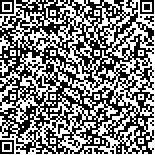| 引用本文: | 柯帅,王文波,廖红展,彭志柱,邱县生,唐慧敏,李清华,夏学巍.生物信息学方法筛选胶质母细胞瘤的核心基因[J].生物信息学,2020,18(1):56-64. |
| KE Shuai,WANG Wenbo,LIAO Hongzhan,PENG Zhizhu,QIU Xiansheng,TANG Huimin,LI Qinghua,XIA Xuewei.Identifying core genes of glioblastoma by bioinformatics analysis[J].Chinese Journal of Bioinformatics,2020,18(1):56-64. |
|
| |
|
|
| 本文已被:浏览 3109次 下载 2121次 |

码上扫一扫! |
|
|
| 生物信息学方法筛选胶质母细胞瘤的核心基因 |
|
柯帅, 王文波, 廖红展, 彭志柱, 邱县生, 唐慧敏, 李清华, 夏学巍
|
|
(桂林医学院 附属医院 神经外科,广西 桂林 541000)
|
|
| 摘要: |
| 多形性胶质母细胞瘤(GBM)是成人最常见的恶性神经上皮肿瘤,关于其诊断和治疗的靶点研究一直是困扰研究者的难题。采用生物信息学的方法对GBM的基因表达信息进行分析,从TCGA中共获取169例GBM样本,正常脑组织样本5例,共17 847个基因。筛选出差异基因3 184个,利用Gene Ontology (GO)富集分析和Kyoto Encyclopedia of Genes and Genomes (KEGG)对差异基因的功能进行富集分析。利用STRING工具和cytoscape构建蛋白互作网络,连通性得分最高的被筛选为核心基因。联合ONCOMINE平台对核心基因进行表达分析。采用Kaplan-Meier法绘制核心基因生存曲线,了解核心基因对GBM患者生存时间和生存几率的相关性。共筛选出上调差异基因1 582个,下调差异基因1 601个。BottleNeck算法中连通性得分前十被选为核心基因,联合ONCOMINE分析,KCNAB2在GBM中低表达。KCNAB2的过表达预测了GBM患者更短的生存时间。相较于正常脑组织,KCNAB2在GBM中低表达。而当KCNAB2过表达时,GBM患者的生存时间明显缩短。但是,核心基因KCNAB2在GBM患者生存时间中的影响机制和存在价值仍需要进一步的研究去验证。 |
| 关键词: 胶质母细胞瘤 mRNA 核心基因 KCNAB2 生物信息学分析 |
| DOI:10.12113/201907004 |
| 分类号:S857.14+1 |
| 文献标识码:A |
| 基金项目:国家自然科学基金项目(No. 81760541);广西区自然科学基金项目(No.2017GXNSFBA198001, No.2016GXNSFCA380028);中国博士后科学基金项目(No.2017M613272XB). |
|
| Identifying core genes of glioblastoma by bioinformatics analysis |
|
KE Shuai, WANG Wenbo, LIAO Hongzhan, PENG Zhizhu, QIU Xiansheng, TANG Huimin, LI Qinghua, XIA Xuewei
|
|
(Department of Neurosurgery, Affiliated Hospital of Guilin Medical College, Guilin 541000, Guangxi, China)
|
| Abstract: |
| Glioblastoma multiforme (GBM) is the most common malignant neuroepithelial turmor in adults. Current treatments are not effective in prolonging patients life. This study used bioinformatics methods to analyze GBM gene expression dataset, and 169 GBM samples and 5 normal brain tissues were derived from TCGA. 3184 differentially expressed genes (DEGs) were screened out and analyzed by Gene Ontology (GO) enrichment analysis and Kyoto Encyclopedia of Genes and Genomes (KEGG) enrichment analysis. Using the STRING tool and cytoscape to construct a protein-protein interaction (PPI), the core genes with the highest ten connectivity scores were identified. The ONCOMINE platform was combined to analyze the expression of the core genes. The survival curve of the core genes was drawn by Kaplan-Meier method to elucidate the correlation between the core genes and the survival information on patients with GBM. A total of 1582 upregulated DEGs and 1601 downregulated DEGs were screened out in GBM. The top ten highest BottleNeck connectivity scores were identified as core genes. Combined with ONCOMINE analysis, KCNAB2was lowly expressed in GBM. Overexpression of KCNAB2predicted a shorter survival time in patients with GBM. The results indicate that KCNAB2is lowly expressed in GBM compared with normal brain tissue. When KCNAB2is overexpressed, the patients survival time is significantly shortened. However, the effect of KCNAB2on patients with GBM and its mechanism still needs further verification. Low expression of KCNAB2may be an important cause of epilepsy phenotype in patients with GBM. |
| Key words: Glioblastoma mRNA Core gene KCNAB2 Bioinformatics analysis |
|
|
|
|






